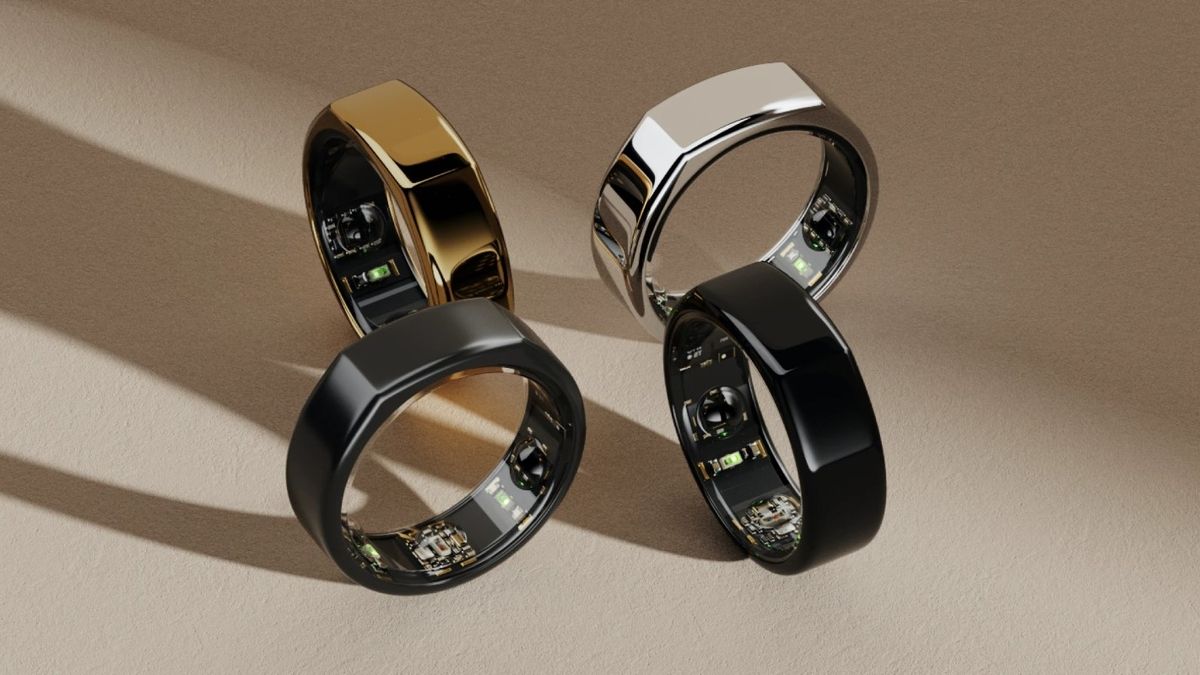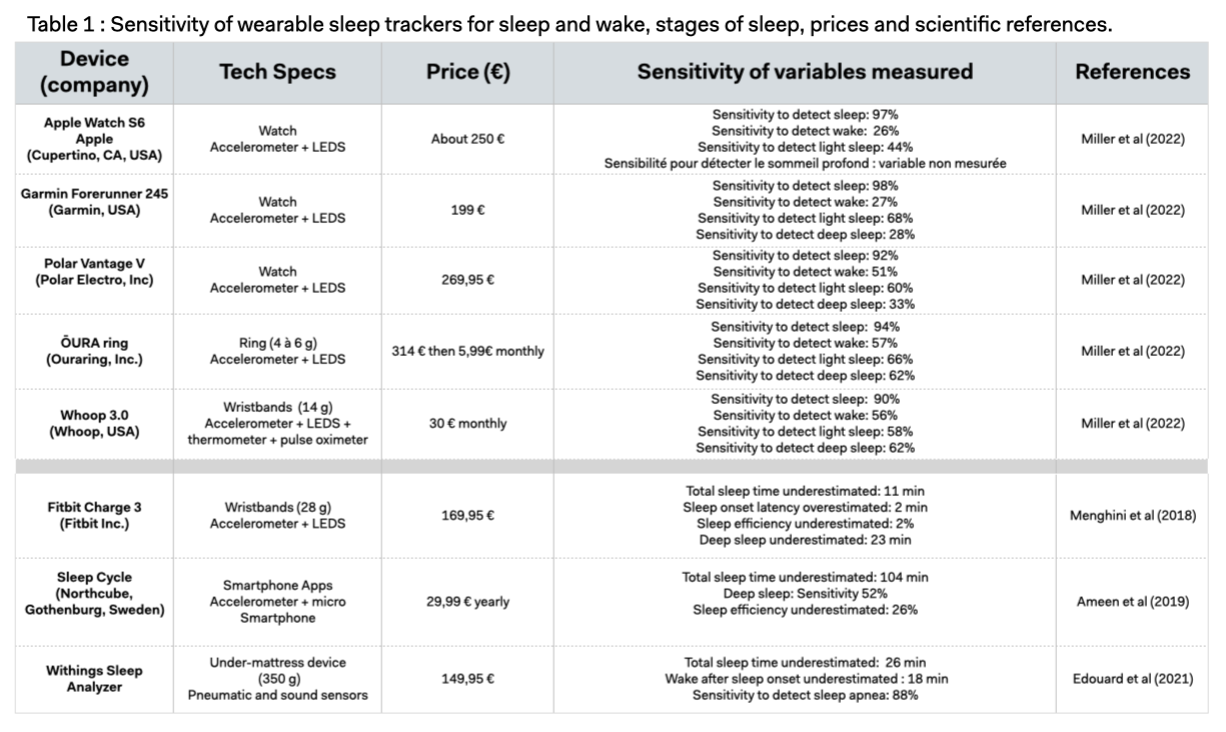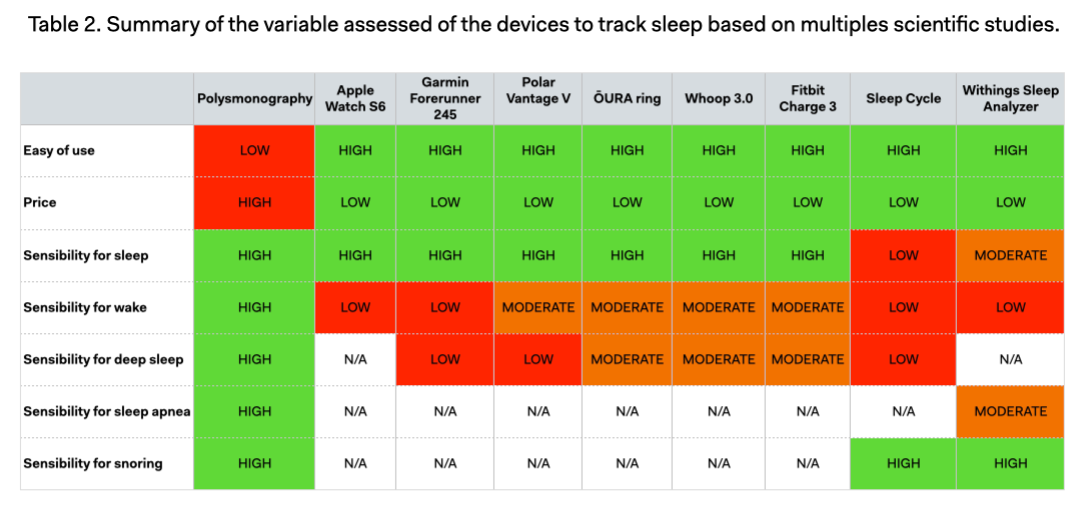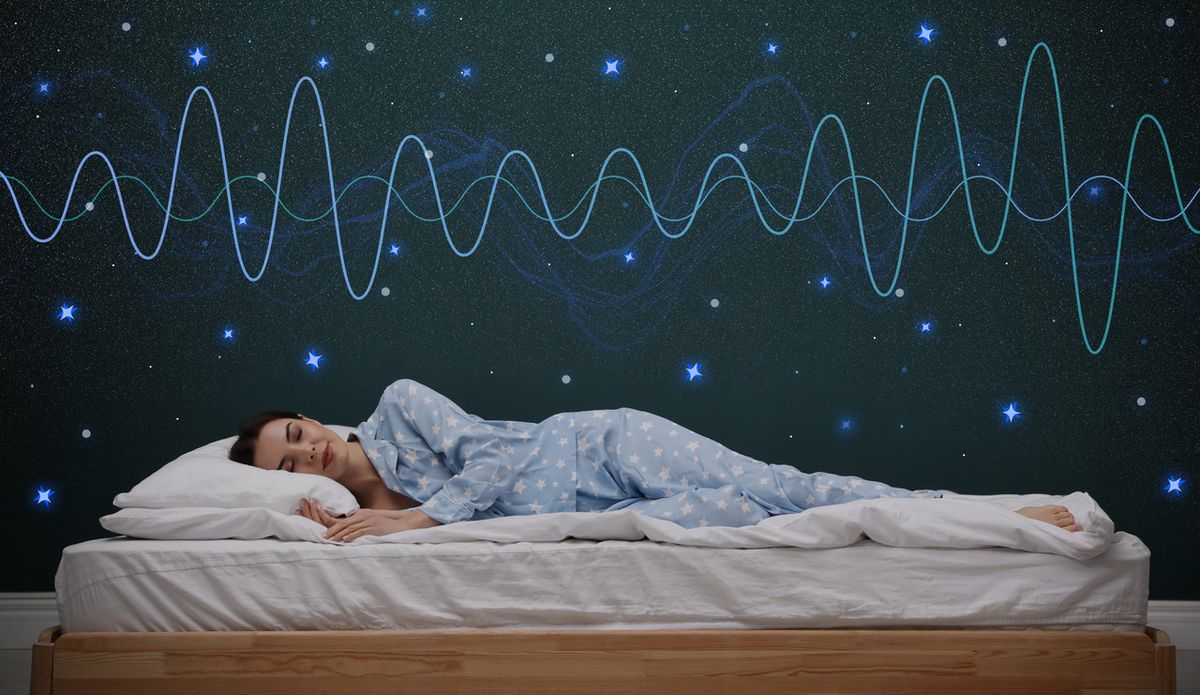Several wearable technologies use devices such as watches, rings, bands, wristbands, headbands, smartphones, mattresses, sensor clips, etc. to monitor sleep. These devices claim to measure the amount of sleep (sleep/wake) and the architecture of sleep (sleep stage classification). They have the advantage of being accessible (data storage and analysis), ergonomic (mobile user interfaces) and affordable. While athletes have become aware of the importance of sleep for performance and injury, and that sleep problems are very common among athletes as well as a third of the world's population, are connected objects for sleep monitoring really reliable? Find out in our survey.

Some specifics...
Polysomnography is the reference method for assessing sleep. It involves recording electrical brain activity using electroencephalography (EEG), eye activity (eye movement) using electrooculography (EOG), muscle activity using electromyography (EMG), breathing activity, leg movements, nasal pressure and heart activity using electrocardiogram. Polysomnography is usually carried out in a laboratory or clinic where the patient spends one night under supervision. The data collected during polysomnography is then analysed to assess the quantity and quality of sleep. This is a reliable way of identifying sleep disorders. Wearable sleep trackers are lightweight, ergonomic, accessible (cloud for data storage, mobile user interface) and affordable in terms of price and analysis. Most of these devices are based on accelerometers (wristbands, watches). These tools are also sometimes coupled with green and/or infrared LEDs to estimate blood volume and heart rate. Each company develops its own algorithms from the data collected by actigraphy and other sensors to analyse sleep. Smartphone applications that track sleep are based on the detection of sounds using the microphone and sometimes movement in bed using the accelerometer of the smartphone when it is placed under the pillow.
Reliability of wearable sleep trackers
To analyse the reliability of wearable sleep trackers, the authors of scientific studies compare the data collected by these devices with that of polysomnography, which is considered the gold standard for measuring sleep. They check the level of sensitivity (ability to detect true sleep, true wake). A sensitivity of 100% means that the device detects a condition perfectly. Some wearable sleep trackers measure: total sleep time, sleep onset, sleep efficiency, wake after sleep onset, sleep architecture such as stage 1, 2 or 3 (deep sleep) and rapid eye movement (REM) sleep. Table 1 shows the main models evaluated by the scientific community, with the current prices applied to the sensitivity of the variables measured.

Scientific studies of wearable sleep trackers show that technologies based on accelerometers and LEDs are valid for quantifying total sleep time. However, these devices are not yet reliable enough to assess the architecture of sleep, i.e. the time spent in light sleep, deep sleep, rapid eye movement sleep and waking up after falling asleep. The performance of wristband devices is far superior to smartphone applications. On the other hand, smartphone applications are relevant for recording snoring or noises made during sleep. Table 2 shows the main variables analysed in the scientific studies according to 3 levels: high, moderate and low. This classification is based on estimates from several scientific studies.

Given the rapid progress being made by manufacturers of connected objects, it is likely that this assessment will need to be updated frequently. We will keep you informed of market developments.


